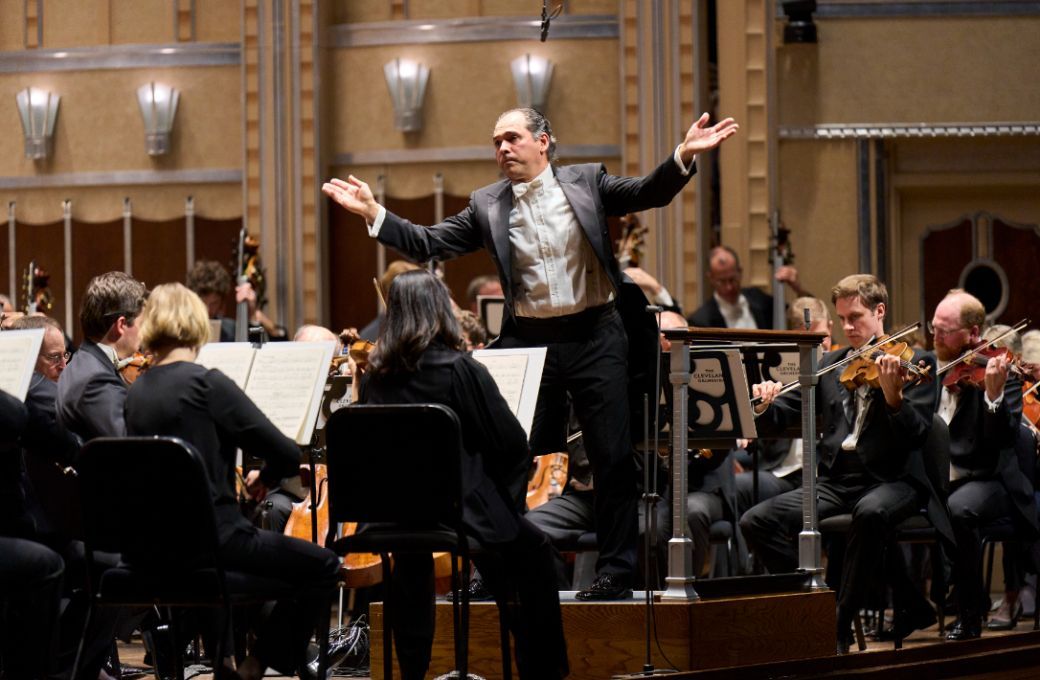This weekend marked the Cleveland Orchestra debut of conductor Tugan Sokhiev. As if to cement a strong first impression, the Russian conductor selected an unusually ambitious program: a complex, labyrinthine contemporary work and an epic, emotionally-fraught Mahler symphony. The ambition paid off, giving the Cleveland audience an inspired and compelling night of music making.

Opening the evening was the US premiere of Geoffrey Gordon’s Mad Song, an English horn concerto inspired by the eponymous William Blake poem. TCO’s own Robert Walters was a committed soloist, perhaps especially attuned to the work’s literary roots being someone who holds a poetry degree in addition to his musical training. Each of the three movements bears the opening line of the corresponding stanza in the Blake poem, opening in a craggy dissonance to paint a desolate scene.
Walters countered with a lyrical, nuanced tone, calmingly pastoral – and this connection to nature made it an apt companion to Mahler. In the cadenza near the work’s end, I was struck by Walters’ flexibility and range of sound before a shimmering figure in the percussion drew matters to a close. It was a piece I confess I found a bit foreboding and austere on first hearing, but the composer was on hand for an enthusiastic reception, and Walters was applauded warmly by an audience no doubt peppered with his current and former students.
Even for Mahler, the Sixth Symphony is particularly intense and concentrated, fully worthy of its Tragic epithet though it spans the whole range of emotion. An imposing march opened, crisp, clean and pointedly articulate. Gentler, more bucolic material was scaled back, and the so-called “Alma” theme – a love song to the composer’s wife – soared and glowed in its hyper-Romantic excess. The first movement’s development saw the march return with gripping intensity, though in this music of sharp contrasts, the sounds of cowbells resounded as a dreamy, distant evocation of the countryside. Sokhiev marshaled the vast orchestra with detailed and communicative conducting, guiding the musicians toward the movement’s bright and brilliant close.
There’s no consensus on the ordering of the inner movements, and Sokhiev opted to place the Adagio first. Following the tumult of the preceding, the conductor drew the orchestra to a state of calm, with a tender horn solo (Nathaniel Silberschlag) floating above. Richly passionate, the long lines of this wondrous slow movement unfolded with a warmly enveloping lyricism. Echoes of the opening began the spiky Scherzo, only to take on a different character. Stylish and playful, Sokhiev emphasized its lilting rhythms, perhaps derived from the Austrian Ländler.
A kaleidoscopic flourish opened the massive finale, with ominous low brass forming the indestructible backbone, building to a powerful chorale. The conductor managed the sprawling and often overwhelming material with taut control, cresting higher and higher to the climactic and catastrophic hammer blows from percussionist Marc Damoulakis – the latter of which was utterly devastating. For a moment, majestic brass playing seemed to suggest a possible triumph, only to be upended by the work’s final descent into funereal darkness.
This weekend also featured a fascinating, carefully curated selection of documents, photos and scores pertaining to Pierre Boulez on view in the hall’s foyer in commemoration of the centenary of one of The Cleveland Orchestra’s most important collaborators. Boulez was certainly a distinguished Mahlerian, and the present performances proved that tradition continues to be alive and well.


